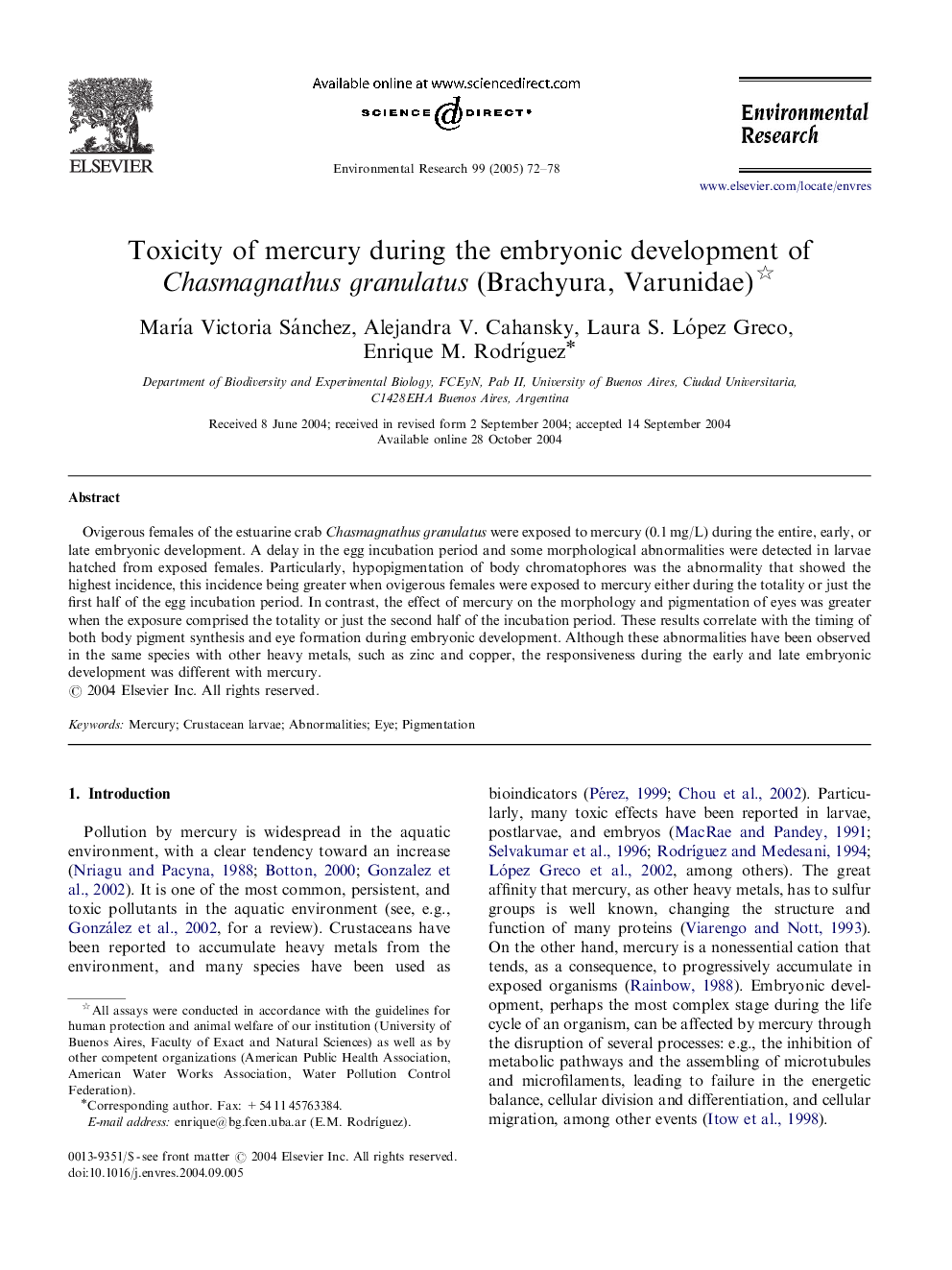| Article ID | Journal | Published Year | Pages | File Type |
|---|---|---|---|---|
| 9464495 | Environmental Research | 2005 | 7 Pages |
Abstract
Ovigerous females of the estuarine crab Chasmagnathus granulatus were exposed to mercury (0.1Â mg/L) during the entire, early, or late embryonic development. A delay in the egg incubation period and some morphological abnormalities were detected in larvae hatched from exposed females. Particularly, hypopigmentation of body chromatophores was the abnormality that showed the highest incidence, this incidence being greater when ovigerous females were exposed to mercury either during the totality or just the first half of the egg incubation period. In contrast, the effect of mercury on the morphology and pigmentation of eyes was greater when the exposure comprised the totality or just the second half of the incubation period. These results correlate with the timing of both body pigment synthesis and eye formation during embryonic development. Although these abnormalities have been observed in the same species with other heavy metals, such as zinc and copper, the responsiveness during the early and late embryonic development was different with mercury.
Related Topics
Life Sciences
Environmental Science
Health, Toxicology and Mutagenesis
Authors
MarÃa Victoria Sánchez, Alejandra V. Cahansky, Laura S. López Greco, Enrique M. RodrÃguez,
